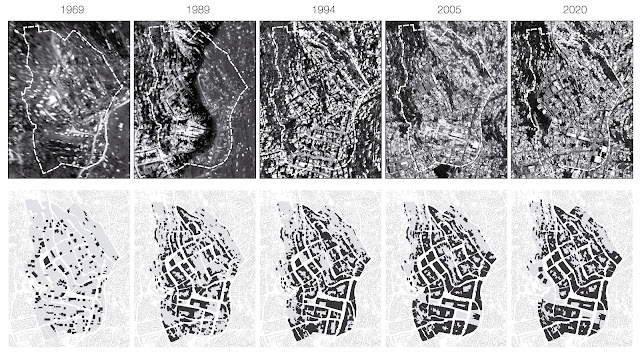An urban design framework of informal development stages Exploring self-build and growth in informal settlements
The Routledge Handbook of Urban
Design Research Methods.
Thematic section 'Informality.'
An[ Urban Design Framework of Informal Development Stages: Exploring Self-Build and Growth in Informal Settlements
Jota Samper PhD (0000-0001-8864-2873)
- ORCID
ABSTRACT
A recurrent framework of defining informal
settlements (IS) is in the singular goal of reaching formality. As such,
development agencies define "slums[ " as areas that "lack"
expected features of the formal city (e.g., durable housing, sufficient living
area, access to improved water , access to improved
sanitation facilities and secure tenure). Forcing the lack of (formal) framework overlooks the
processes that make these urban forms and communities who live there different
from traditional western perspectives of city-making and urban design. Communities'
self-build processes and the areas' constant growth are indeed informal
settlements' most salient morphological features. These features then permit
the identification, mapping, and creation of geometrical models that ultimately
help scholars predict informal settlements' growth. Part of the challenge of an
accurate definition of informal settlements is limiting our understanding to a
set of fixed characteristics regarding an urban form, which in reality is in
constant flux. This chapter explores current practices and methods of exploring
informal urban forms. Finally, the chapter postulates a morphological framework
for classifying and studying IS in predictable Informal Development Stages
(IDS). This framework understands urban growth as a relationship between
population growth and building growth that can be separated into three unique
linear stages: Foundation, Infill, and Consolidation. Each stage's
characteristics set up opportunities for research and urban design in these
urban forms.


Comments
Post a Comment